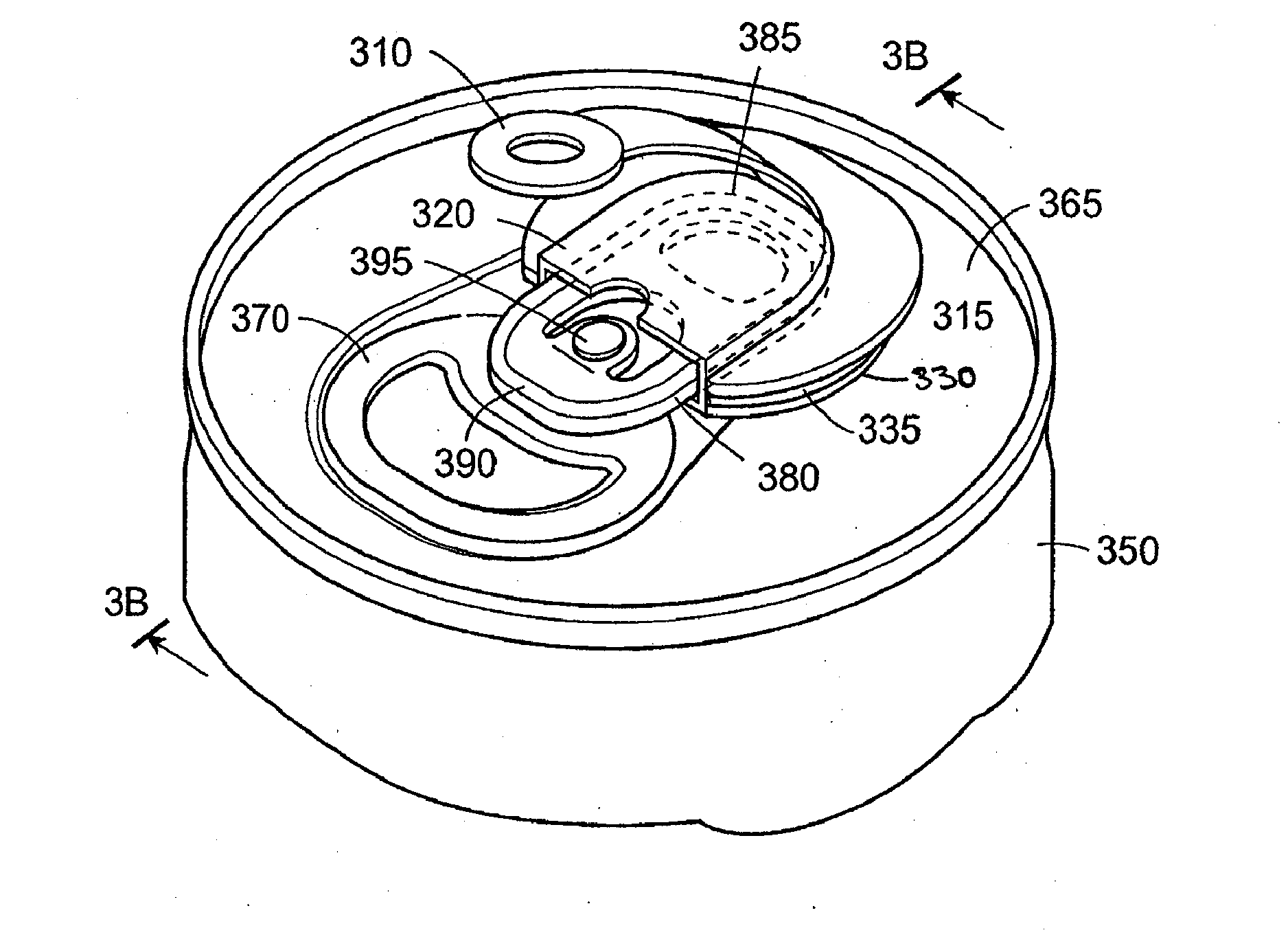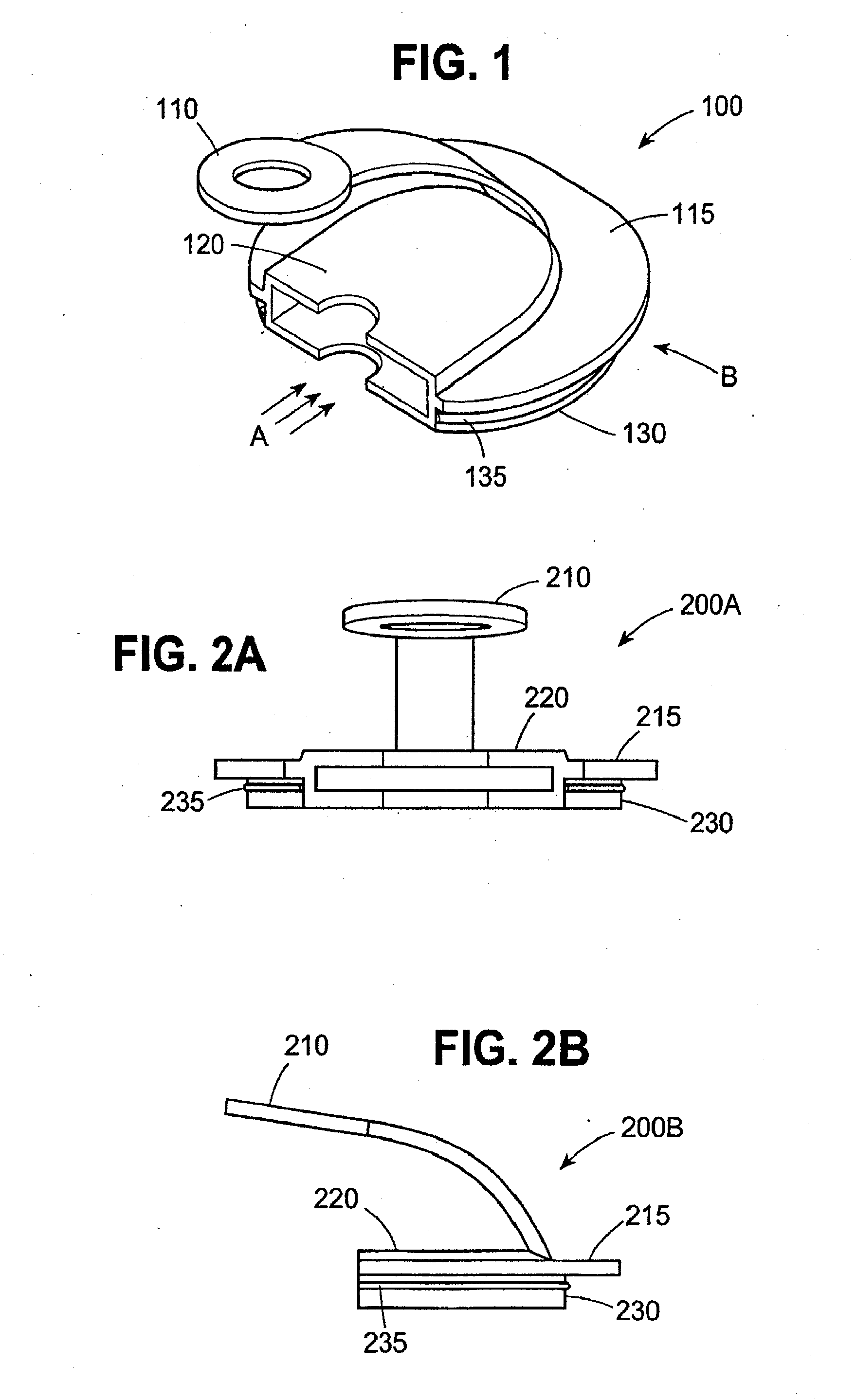Device for opening and sealing a beverage can lid
- Summary
- Abstract
- Description
- Claims
- Application Information
AI Technical Summary
Benefits of technology
Problems solved by technology
Method used
Image
Examples
Embodiment Construction
[0023]Referring to the drawings in more detail, FIG. 1 illustrates an exemplary embodiment of the present invention, i.e. device 100. Device 100 comprises a pull handle 110, upper base portion 115, sleeve portion 120, and lower base portion 130. As used herein, the phrase “base portion” refers, collectively, to the upper base portions 115 and lower base portion 130. Lower base portion 130 includes a minor outward protrusion running along its perimeter, i.e. ridge 135. Ridge 135 spans the perimeter of lower base portion 130. In an alternate embodiment, base portion 130 may include a plurality of parallel ridges. Pull handle 110 is flexibly connected at the interface between sleeve portion 120 and upper base portion 115. The base portion houses the sleeve portion 120 that is configured to receive the lifting end of a flip-tab found on a conventional beverage can lid. As shown, the sleeve portion includes an upper and lower surface. In an alternate embodiment, the lower surface extends...
PUM
 Login to View More
Login to View More Abstract
Description
Claims
Application Information
 Login to View More
Login to View More - R&D
- Intellectual Property
- Life Sciences
- Materials
- Tech Scout
- Unparalleled Data Quality
- Higher Quality Content
- 60% Fewer Hallucinations
Browse by: Latest US Patents, China's latest patents, Technical Efficacy Thesaurus, Application Domain, Technology Topic, Popular Technical Reports.
© 2025 PatSnap. All rights reserved.Legal|Privacy policy|Modern Slavery Act Transparency Statement|Sitemap|About US| Contact US: help@patsnap.com



